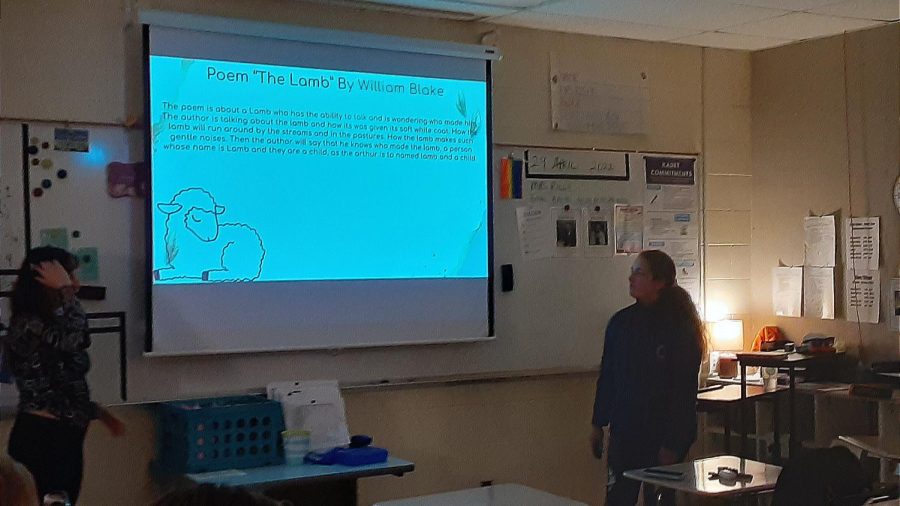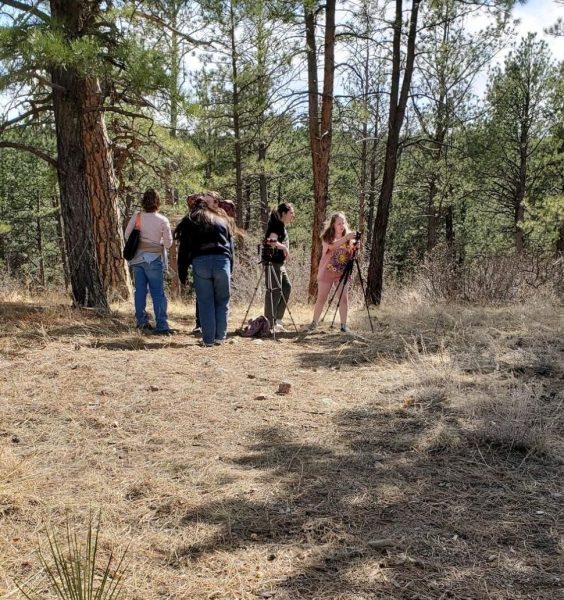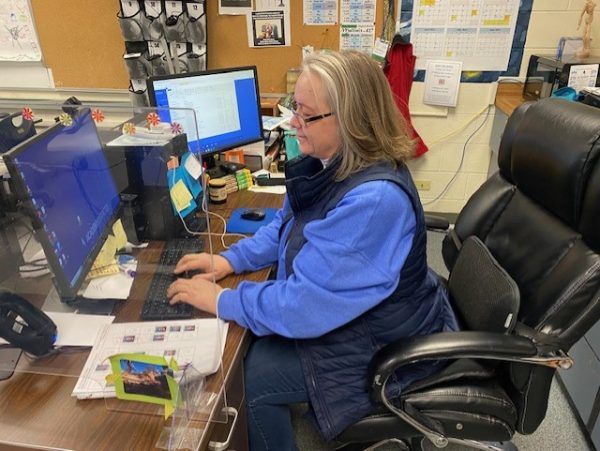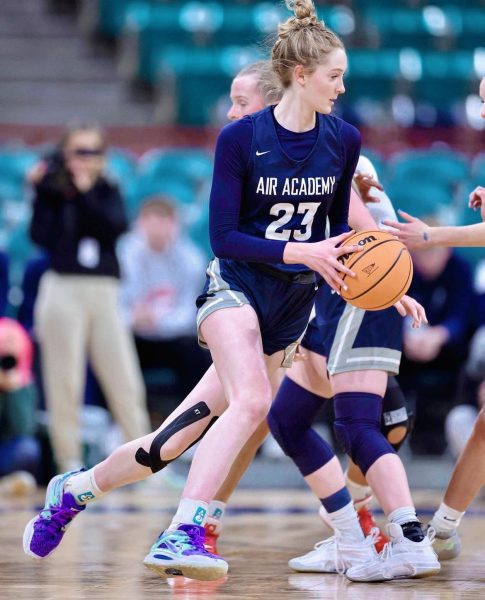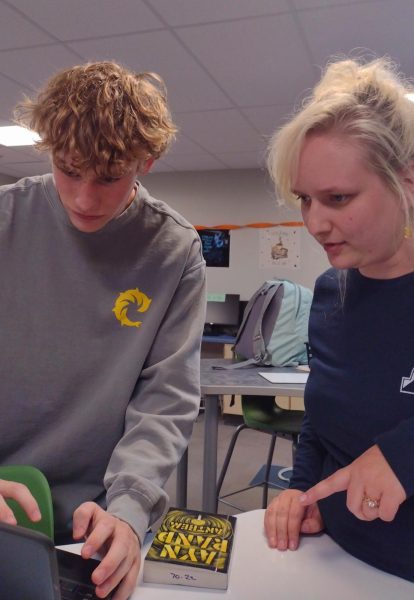The Psychology and Use of Group Work
Students present their Allusion Project to the class.
From the beginning of a student’s school life, they are exposed to group work or collaborating with peers. On top of giving students opportunities to make connections, group work is used to prepare students for future experiences, such as collaboration with a team on an architectural project. While group work is generally beneficial, not all students or teachers have the same view on group work. And in truth, the practice does not always go as intended.
“Cooperative learning is characterized by positive interdependence, where students perceive that better performance by individuals produces better performance by the entire group,” Cynthia J. Brame and Rachel Biel state in the guide Setting up and facilitating group work: Using cooperative learning groups effectively. This article delivers information regarding group work. While group work in the education system intends to value every member equally, often, a student may stand out. A student choosing to shoulder more of the workload or a student choosing to shoulder none is commonplace in group work.
The article prudently describes a difference in types of group work, suggesting “informal” groups to be pairs that answer questions over a short period. An example of an informal group would be a group randomly assigned by the teacher, tasked to watch a video and answer a sheet of questions. It suggests that formal groups are groups working on a large objective throughout a few periods. This could be working on a presentation on the pros and cons of fossil fuels.
Many teachers choose to employ specific strategies to make students better focus. Assigning roles is a common strategy. For example, teachers may assign the role of “recorder” in a science lab, giving the student the task of recording data.
“Group work can improve collaboration, communication, leadership, and accountability. The best way to enforce that is to let them peer-grade each other on their participation and highlight any good attributes in the other member,” English teacher Rachel Riley stated.
Students often choose their amount of workload based on their personality and the other members of the group’s personalities. Pairing up with an introvert may lead to a disconnect within the group. Lack of communication leads to a less effective group, whether intentional or not. Pairing up with an eccentric extrovert may decrease productivity as well. Being well-liked, they want to keep up their persona and take on extra work from the group, taking away from social opportunities and ideas.
“I’ve never been a slacker and there have been many times when I’ve been faced with teammates who are. Unproductive teammates are a burden on the group. I’ve learned how to deal with people that don’t contribute,” senior Dante Killian commented about his past experiences.
Group work is a necessity for learning. It is a tool used by teachers to benefit the students. It provides social opportunities and a foundation for the future. While some students may not enjoy it and others love it, it is an infrastructure. Students should choose to make the most out of their group time to benefit themselves and the group.

Hi, I’m Lex Griffin. I’m a sophomore at Air Academy. I’m really interested in everything music, from theory to just listening to it. If you are curious...



